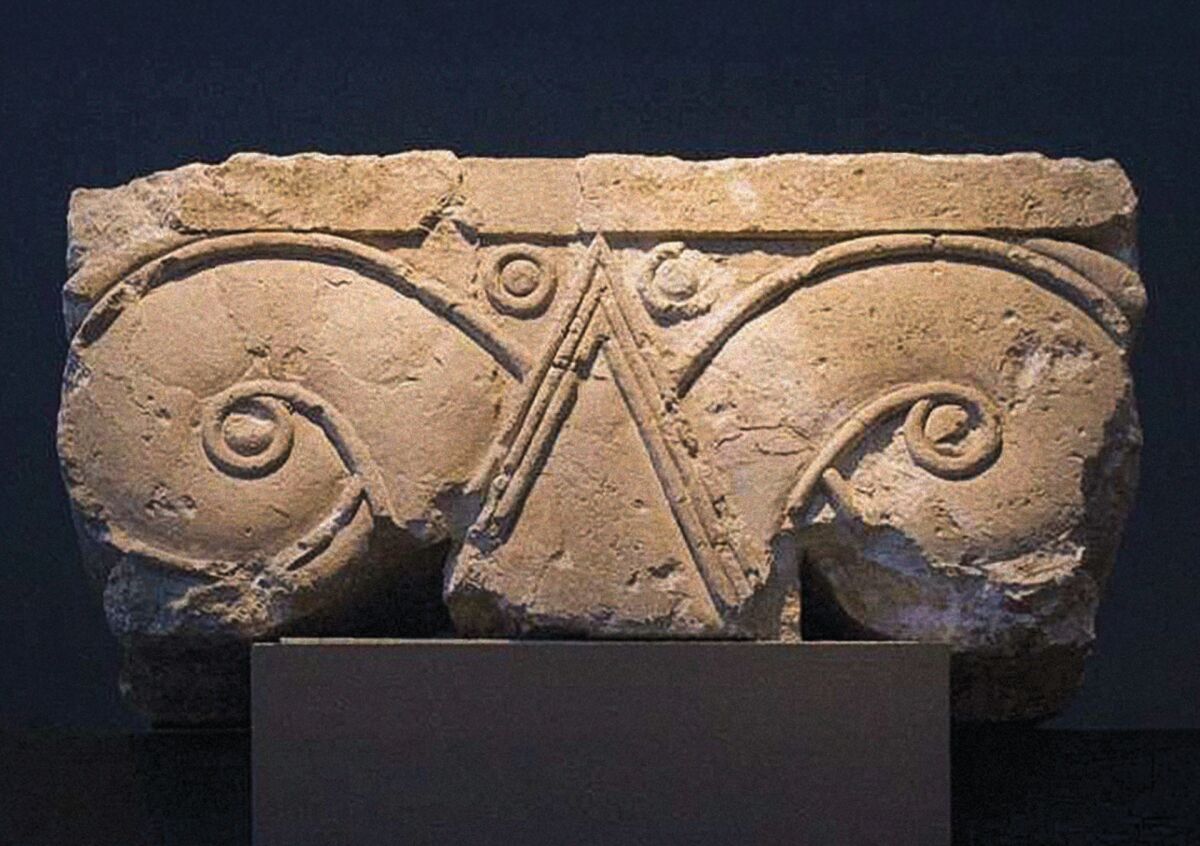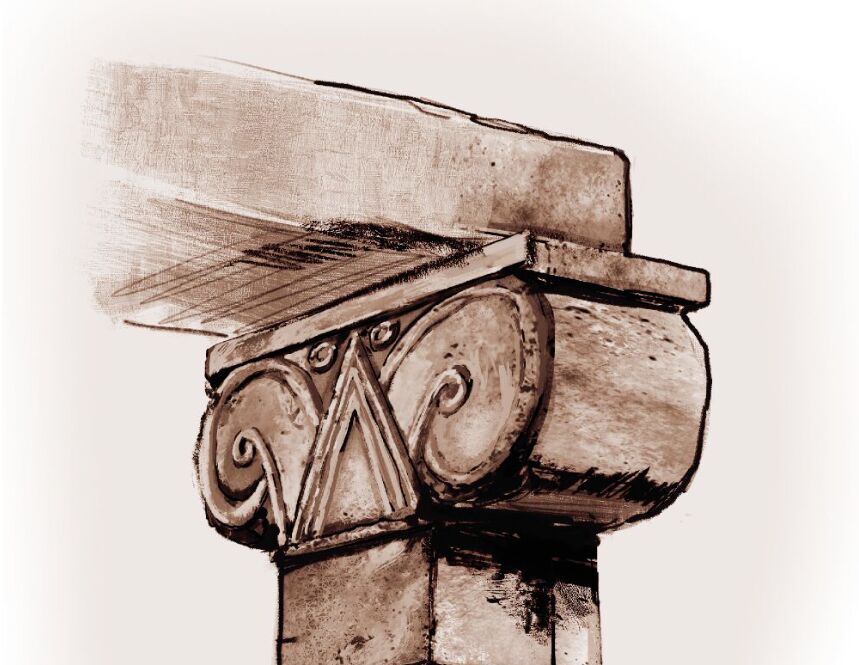In the 10th century b.c.e., a new style of monumental architecture began to emerge in Israel. This style featured two new and distinctive elements. Israeli archaeologist Prof. Yigal Shiloh understood this change in architecture as a common practice in the ancient Near East where most “cultures resorted to splendid building at the time of their eruption” (Qedem 11, 1979)
The first change revolved around the type of stone used for construction at royal cities. Instead of unhewn fieldstones, monumental structures began to be built using large, finely dressed stones known as ashlars. Evidence of this ashlar stone construction method in the 10th and ninth centuries b.c.e. has been discovered in several Israelite cities, including Dan, Hazor, Jerusalem, Khirbet Qeiyafa, Megiddo and Samaria. According to Professor Shiloh, the use of ashlars for monumental construction provided a suitable alternative to timber, which would inevitably grow scarcer as construction increased.
The second change concerned the development of a new style of capital stone, known as proto-Aeolic, or volute capital.
A capital (from the Latin word caput, meaning “head”) is the decorative uppermost stabilizing part of a column, or pillar. The presence of a capital is evidence of a substantial structure. Tents and regular homes don’t typically feature giant pillars with large capitals. The discovery of a capital testifies to the monumental architecture, and the general wealth and power, of the ruling entity.
“Proto-Aeolic” refers to a particular early Phoenician-Israelite-style design, which depicts two palm motifs, classic symbolism found in Israel, Moab and Phoenicia.
About three dozen proto-Aeolic capitals have been found at sites in the Levant and Cyprus. The highest concentration of these capitals comes from sites in Israel and Judah. According to Prof. Oded Lipschits, these capitals give insight into the scale and opulence of the gates and palaces in these kingdoms.
The finest example of a proto-Aeolic capital was discovered by Kathleen Kenyon in Jerusalem in 1963. The capital, which was found in two pieces, is massive. Measuring 1.27 meters (4.2 feet) long, 0.63 meters (2 feet) tall and 0.42 meters (1.4 feet) thick, it weighs almost 1 ton. Kenyon uncovered this impressive feature, which would have adorned a massive pillar, during excavations at the base of the Stepped Stone Structure in the City of David. She found it among debris and large ashlar stones that had evidently fallen from a royal structure atop the hill.
Professor Shiloh described Kenyon’s capital as “especially superior.” He also called it “the finest of all the proto-Aeolic capitals in this country. The proportions achieve perfect harmony.”

When Kenyon found it, she concluded that it was obviously from an important building that had stood on the top of the scarp. She theorized that it “may be the one architectural relic of Solomon’s Jerusalem so far found.” Thirty years later, after reading about David’s palace in 2 Samuel 5, Dr. Mazar theorized that it might have belonged to David’s palace. Dr. Mazar wrote: “This was just the kind of impressive remains that one would expect to come from a 10th-century b.c.e. king’s palace.”
It is difficult to assign a specific date to a capital. Unfortunately, like the Kenyon capital, almost all of the capitals discovered across Israel were found broken and not standing in their original contexts. Some scholars have attempted to push the dates of the “first” proto-Aeolic capitals into the eighth century b.c.e. This is problematic for at least two reasons.
First, many of the royal structures associated with these capitals were destroyed in the eighth century. To be destroyed at that time, they would have had to have been constructed earlier.
Second, early shrine models dating to the ninth century feature the same style capital. Archaeologists have also discovered several seals dating to the ninth century in Jerusalem that feature the capital motif. Clearly, the proto-Aeolic capital design was an established style earlier than the eighth century b.c.e. For more information on the dating of capitals and ashlar masonry, read “Royal Architecture in the Iron Age Levant” by Mumcuoglu and Garfinkel.
Kenyon’s capital was discovered among a pile of ashlar debris that most likely fell during the destruction of Jerusalem in 586 b.c.e. Originally, it was part of a royal building structure situated above the Stepped Stone Structure, which has been dated to the time of King David. While one cannot be certain about the dating of the capital itself, it is reasonable to conclude that it dates to the same time period.
2 Samuel 5 records the construction of David’s palace. Soon after David became king of Israel, Hiram, the Phoenician king of Tyre, sent craftsmen and materials to help build the palace: “Then King Hiram of Tyre sent messengers to David, along with cedar timber and carpenters and stonemasons, and they built David a palace” (verse 11; New Living Translation).
Earlier examples of the volute style capital are found in Israel, rather than in Phoenicia itself. Thus it is plausible to consider the emergence of proto-Aeolic capitals, and the associated ashlar masonry, as a new Israelite style of royal architecture created alongside the genius of the Phoenician artists and stonemasons.
As Yigal Shiloh wrote in his defining text on proto-Aeolic capitals, “It would be too simple to ignore this official development and to separate the process of crystallization of the material culture (mainly from the 10th century b.c.e. on) from the process of political and economic growth of the kingdom of Israel and Judah in the period under consideration and to ascribe the origins of its appearance solely to the import of knowledge of neighboring lands.”

